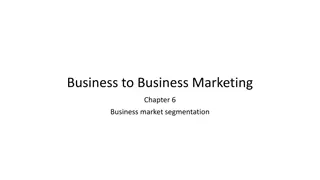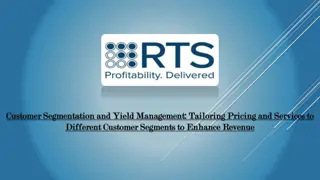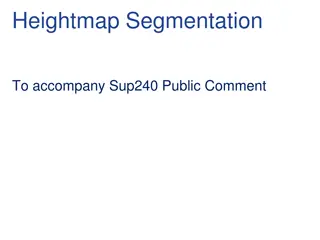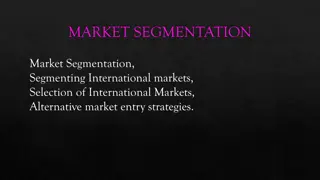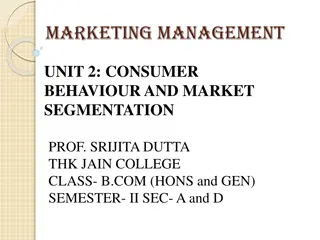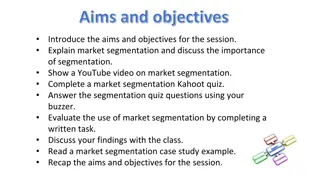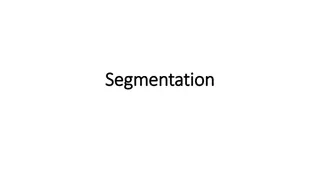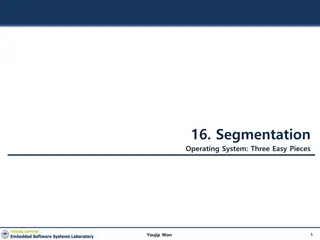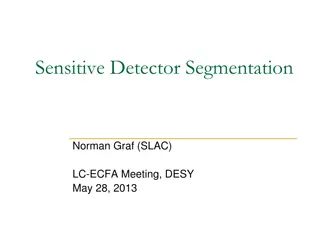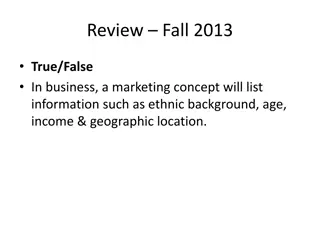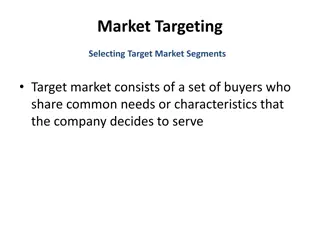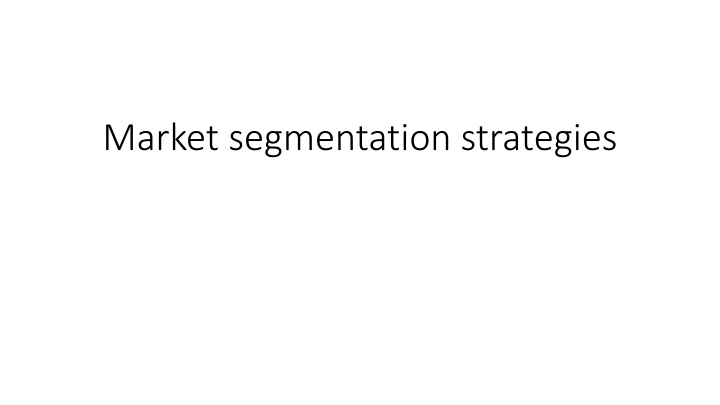
Effective Market Segmentation: Strategies, Benefits, and Criteria
Explore the world of market segmentation including strategies, benefits, and criteria. Learn about segmentation dimensions such as demographic, psychographic, behavior, and geographic to effectively target your audience. Understand how segmentation helps customize products, tailor promotional campaigns, and make informed marketing decisions. Discover the importance of creating segments that are homogeneous, substantial, actionable, and measurable for successful marketing initiatives.
Download Presentation

Please find below an Image/Link to download the presentation.
The content on the website is provided AS IS for your information and personal use only. It may not be sold, licensed, or shared on other websites without obtaining consent from the author. If you encounter any issues during the download, it is possible that the publisher has removed the file from their server.
You are allowed to download the files provided on this website for personal or commercial use, subject to the condition that they are used lawfully. All files are the property of their respective owners.
The content on the website is provided AS IS for your information and personal use only. It may not be sold, licensed, or shared on other websites without obtaining consent from the author.
E N D
Presentation Transcript
A segment is a relatively homogeneous group which responds to the marketing mix in a similar way. Segmentation helps to customize the products or services and tailor its promotional campaigns
Benefits of segmentation Developing of marketing mix Decision in store location Understanding consumer behaviour Promotional campaign Merchandising decision positioning
Criteria for effective market segmentation Homogeneous within Heterogeneous between Substantial (profitable, for example: Bombay store) Actionable (useful for identifying customers, for example: Barista coffee) Accessible Measurable
Dimensions of segmentation Demographic Psychographic Behavior Geographic
Demographic segmentation Gender ex: Benetton, shoppers stop Age ex: mom and me Income for example : Tupperware target middle class married women in 30 s who are making money Social class under this segmentation is done on the basis of societal standards Family Mc Donald s positioned itself as a family joint and provides reliable and safe dining experience. For example: play areas for children for their cool shopping experience Occupation working women overall spending is about 10% more than that of a housewife and they spent much more on life style products. For example: KSA technopak study(2002) which states that youths in India are core target customer for life style products like personal care, music, eating outs, parks, etc. Education level under this segmentation is doe on the basis on the level of education such as highly educated, educated or uneducated
Psychographic segmentation It includes Life style: it is reflected in activities (work, social, hobbies) and opinion (politics, education, social issues) For example: Barista CCD is visited mostly by youngsters For example: khadi reflects Gandhi wadi, politicians and painters Personality Values: it determines the attitude and behavior VALS value and lifestyle segmentation applied to India
Behavior segmentation Customers are divided into groups based on the ways they respond to use or know a product or a service. Basis of segmentation under behavior segmentation are: Occasion does the customer make regular purchases or occasional such as on festivals Frequency of purchase daily, weekly or monthly Quantity of purchase bulk or in small quantities Buyer readiness stage Source of purchase
Geographic segmentation Under this segmentation is done on the basis of area such as rural, urban, suburban, metro, driving time, etc. In this type of segmentation, people of same geographic location or area are segmented together. For example: Subhiksha short distances in Chennai
There are basically 3 main strategies Undifferentiated marketing strategy Differentiated marketing strategy Concentrated marketing strategy
undifferentiated marketing strategy management focusses on common needs of the people products and services are designed to satisfy the maximum number of customers strategy does not make any differences among the consumers relies on mass production, mass advertising and mass distribution
Example: Common examples are of soft drinks or television advertisements, radio ads, print news ads
Differentiated marketing strategy Grouping of customers is done Market is divided into various segments Different products are offered for different consumers It provides higher customer satisfaction Goods are provided as per the needs and wants of individual customer
Example a restaurant can target both college students and families. They use differentiated marketing strategy such as they can offer cheap food and drink menus for college students. On the other hand, it can also appeal to a kid-friendly environment and meal options for families.
Concentrated marketing strategy Marketer concentrates on one particular segment rather than various segments Follows the principle of one product and one segment Best suitable when new products are introduced in the market
Example The manufacturer of Rolex watches has chosen to concentrate on luxury segment of watch market. Apple is also a great example of concentrated marketing strategy. The company only focusses on high income group people because it uses premium pricing policy for all its products.

